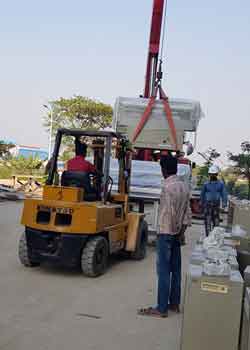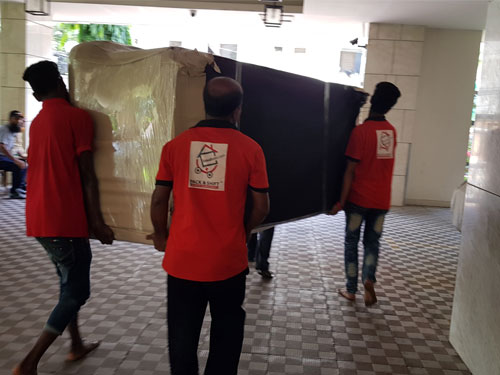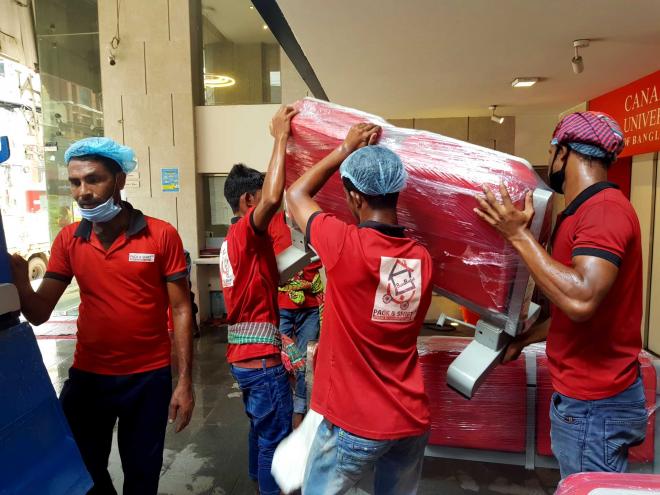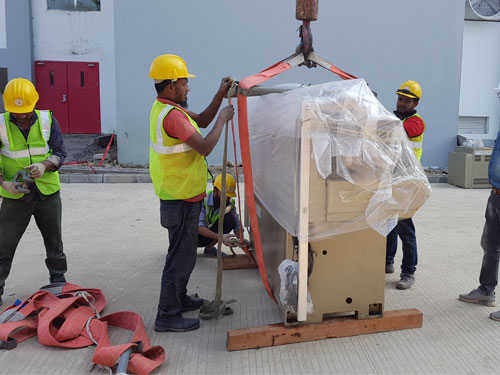Explore the PACK & SHIFT Service
PACK & SHIFT,
one of the largest and 1st Moving companies in Bangladesh, evolved from a small scale business of pack & shift Household Carrier established in 2001 and functioned particularly for the shifting of household goods. Incepted by vision and hard efforts of kowsar alom, the company moved ahead towards the path of growth.
BENEFITS:
Expert packing for maximum safety Seamless, stress-free relocations Affordable pricing without hidden fees Timely and reliable service Comprehensive moving Read More
WHEREVER YOU WANT
Find reliable and efficient nationwide moving services with our top-rated company. Expert movers ensure your relocation is seamless, whether across the state or country. Experience stress-free moving with our comprehensive packing, transport, and unpacking services. Trust us for your next move. Your journey to a new home starts here.
BENEFITS:
Highly trained and experienced movers, Packing and loading to transportation, Competitive pricing models designed, Move your belongings safely across states, Advanced logistics and tracking Read MoreEXPLORE OUR VEHICLES
Discover top-rated movers and packers offering timely delivery for your relocation needs. Our experts ensure fast, efficient, and secure packing and moving services nationwide. Trust us for a stress-free move with our commitment to punctuality. Experience seamless relocation with our reliable and timely delivery. Move with confidence today
BENEFITS:
Professional movers and packers use high-quality materials, Tailored moving plans to meet individual needs, Efficient coordination of the entire moving process from start to finish, Equipped with the latest tools and vehicles Read MoreDELIVERY ON-TIME
Experience stress-free home shifting with our on-time delivery guarantee. Our movers and packers specialize in efficient, reliable service, ensuring your belongings reach their destination safely and on schedule. Trust us for seamless relocation, with tailored solutions to meet your unique needs. Begin your worry-free move with our dedicated team today
BENEFITS:
Guarantees that all aspects of the home shifting process, Offers customers the ability to track their belongings in real time, Employs sophisticated logistics planning to optimize routes and schedules, Focuses on customer satisfaction by offering flexible scheduling Read MoreFULLY DEDICATED TEAM
Choose the best moving team for a hassle-free relocation experience. Our top-rated professionals offer efficient, reliable, and personalized moving services, ensuring your belongings are handled with utmost care. From packing to delivery, trust our expert team for a seamless move. Get peace of mind with our exceptional moving solutions
BENEFITS:
The best moving teams consist of experienced and trained professionals who excel in packing, loading, and transporting items safely and efficiently, Prioritizes customer satisfaction through excellent communication, customized moving plans, Read MoreOur Services
PACK & SHIFT is the modernization of shifting services in Bangladesh. We provide A to Z Service of Office or House Shifting related work 01798111222. Domestic, Commercial & industrial moving available any time anywhere in Dhaka.
What we work
Latest News

Here are a few places to explore shipping.
PRE-MOVE CHECKLIST?
Customs & Tax Representation Reusable Packaging Warehousing Read More
Things need to know about shipping.
ARE YOU A SHIPPER?
Customs & Tax Representation Reusable Packaging Warehousing Read MoreClients Say
I shifted my home from Gulshan to Dhanmondi, I hired pack and shift for the procedure to take place. Their team arrived on time and patiently packed and loaded all my goods to the truck and unloaded at the desired place. Totally, I liked the experience with pack and shift.
I am Very glad with their good service and good behavior. You guys can go too. Good website thank a lot.
Their service allows people to shift hassle-free. They pick things and move them with care. They carefully pack the stuff and their service is great. I am happy.
When I got information from my office that I have to relocate to Dhaka Cantonment to Chattogarm, I was literally very worried because of change in state with entire household goods that I have. When I discussed this with friend.


































